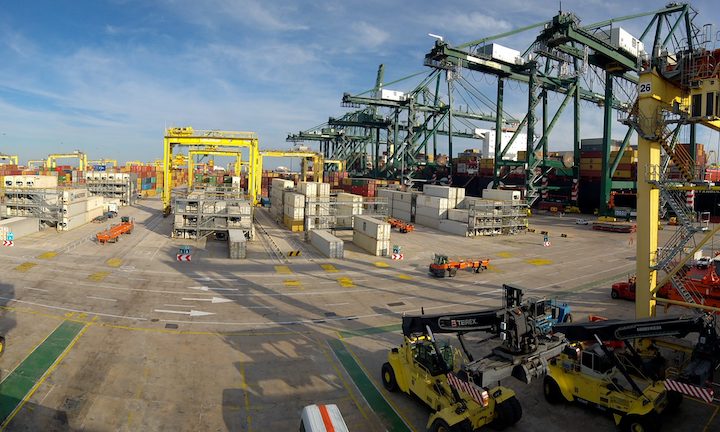The president of the Port Authority of Valencia (PAV) and the Valenciaport Foundation, Aurelio Martínez, said during the presentation of the H2VLC Valencia Green Hydrogen Valley project in the Glass Hall of Valencia City Council that "Valenciaport is a pioneer in Europe in the use of hydrogen in port operations through the H2Ports project and for which we have received the international Green4Sea award".
The president of the PAV explained that "Valenciaport has been committed for many years to issues of decarbonisation, balance and sustainability and a good proof of this is that we have all the environmental and energy certifications, we measure and monitor noise levels, water and air quality". In this sense, Martínez added that "the Port of Valencia has two air quality measurement booths with the latest technology that record eight elements of different gases and particles to report the data in real time and available on the Generalitat's network. These control booths have never been disconnected since they were installed and allow us to know the air quality around the port".

In 2008," continued the president of the PAV, "we began calculating the carbon footprint and since then the footprint has been reduced by 30% while in the same period traffic has increased by 42%. Our commitment is obvious and this is confirmed by the data, but we want to be more ambitious with the Valenciaport 2030, zero emissions project. We have research mechanisms and economic resources to implement projects with alternative and green energies that will allow us to be 20 years ahead of the European objectives of decarbonisation and the fight against climate change".
The president of the PAV said during the presentation of H2VLC Valencia Hydrogen Valley that "this energy is sure to play a key role in a decarbonised and emission-free economy, but there is still a lot of work and investment to be done and also a lot to learn, and there is no better way to do it than daring to be pioneers and take the first steps". For Martínez "an initiative such as H2VLC could be key for the future and the commitment to sustainable growth, and the Port has the duty and, above all, the will to do its bit and collaborate with the region, the city and the rest of the social and economic agents to achieve this".










